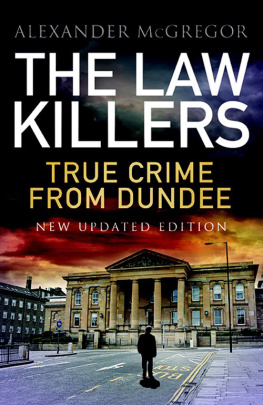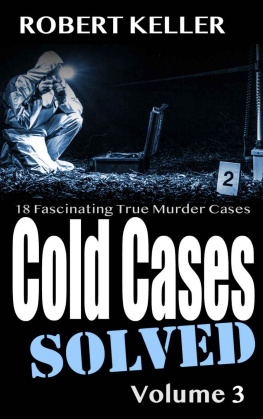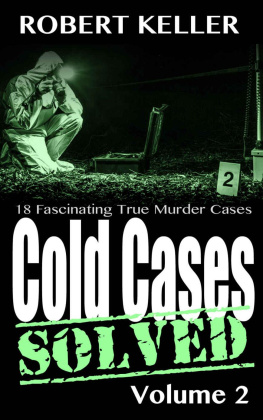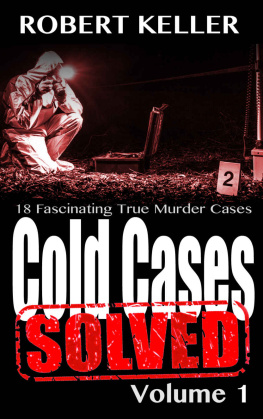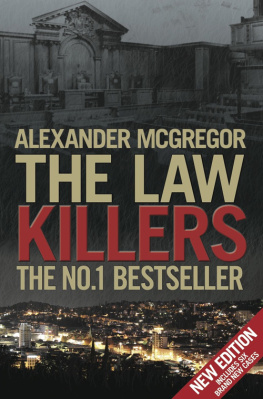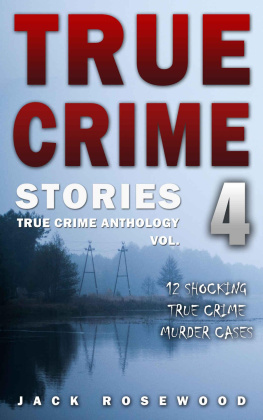
For Christine
who gave me some of the words and all of the time.
Where to begin? So many people, knowingly or not, have assisted in the compilation of these pages that it is not practical to list them all. A large proportion of them were former police officers who generously shared their time and experiences with me and I am extremely grateful for their recollections. Among them was ex-Detective Inspector Bob Donaldson who helped me locate these invaluable people.
I am also deeply indebted to D.C. Thomson & Co. Ltd for their considerable cooperation, not least of which was the unrestricted access they allowed me to their extensive cuttings and photographic libraries. Many of the photographs used belong to them. In particular, I would like to thank Gwen Kissock and Anne Swadel for their encyclopaedic knowledge and willingness to help. Others who assisted were Gordon Robbie, Gus Proctor, Colin Stewart, Jackie Laing and Susan Dailly.
Special thanks are due to respected sports journalist John Mann, who took a break from some of the violence of the football field to research a 19th century poisoning, the results of which he very kindly passed to me and which were central to the preparation of one of the chapters.
My gratitude also to the staff of Dundee Central Library and the Scottish Prison Service.
Thanks too I think to author Norman Watson, a journalistic colleague, who enthusiastically prodded me into this, but who neglected to inform me how much work would be involved.
Most of all, I would like to record how grateful I am to the countless journalists who contributed indirectly to this book through their reports of the crimes and coverage of the trials of those responsible.
Reporters are a much-maligned breed and they do not always receive the recognition they deserve. It is not generally appreciated that the words they write in todays newspapers form the basis of tomorrows history books.
Alexander McGregor
CONTENTS
Murder is a funny old game. The end result is the same but the journey to that hellish destination is always different. The route can sometimes be straightforward enough, uncomplicated and not too difficult to understand why some people travelled in that direction. At other times, the trip can be as complex and unfathomable as the travellers themselves.
Some of the leading players are, in truth, not so different from the rest of us. They have committed the ultimate crime in a moment of insanity, a solitary out-of-character act which changes lives forever. It is instantly regretted but as irreversible and final as the last breath of the person who perished. It is a route they are unlikely to take again. Their meandering journey through life has merely sent them down the wrong path on the wrong day, perhaps when they stopped off along the way for one drink too many.
Sometimes it is just the chemistry between two people which is wrong, incompatibility being resolved by the most extreme of actions. If fate had not introduced the leading players, they would never have figured in the logbook of death. Others commit murder in the furtherance of another crime an impulsive act during a robbery or to cold-bloodedly silence the victim/witness of a rape or the depraved assault of a child.
Then there are the monsters, the ones who sit beside us on the bus or are behind us in the checkout queue and whose faces we only see when they stare out at us from newspapers, after some unspeakable act of slaughter. They kill for no other reason than the pleasure it gives them. These largely untreatable people are indiscriminate and unpredictable. They could do the same again next week or next year and are only likely to desist in their murderous activities if traced and detained, or if overtaken by death themselves.
So those who assume the role of God come in many guises. The only thing they have in common is the corpse they leave behind. It is this diverse range of motives, unmatched in the criminal compendium, which makes murder the easiest or most difficult of offences to detect. When perpetrator and victim are closely connected, as they frequently are, the police are rarely troubled for long: there is usually evidence in abundance. It is the random slaying, when there is no prior link with the victim, which can launch the murder hunt that may have no conclusion.
Just as homicide does not respect age or gender or predictability, it also takes no account of geography. The malevolence which lurks in one degree or another in nearly all of us arrives wherever we live. Those who kill need not be the inhabitants of the largest cities or the places with the most violent reputations. Stick a pin in a map and you are liable to stumble upon them anywhere. In this case, it landed on the city of Dundee in Scotland. It is an average-sized town with average-type people living there and it seemed a suitable place to peel back the civilised layers and reveal what festers in all communities making up our orderly society. It is no better and no worse a place than any other when it comes to murder. What goes on there happens with just the same amount of wickedness and suffering and regret as it does elsewhere.
Those you will read about fascinate and repel in equal measure, but there is no single reason why any of them found their way into this book. With no particular period or type of murder under consideration, there was a lot to choose from. In the end, the chapters were selected because they contained elements that were intriguing or unusual enough to make them stand out from the rest. Some of the killings were, and will remain, among the most notorious in the dark history of homicide. Others did not attract international headlines but are absorbing for the complexities of the people who carried them out, or for the reasons they were committed. It also seemed important to try to produce a representative selection of the types of killers and their crimes from the wide spectrum available. Most categories are covered, though others might have chosen differently.
The following pages contain some material which is not for the faint-hearted. Murder is a messy business, however it happens, so there are passages you are unlikely to read in a romantic novel. Nothing has been included for gratuitous purposes and in some instances the content has been diluted to avoid offence but not so severely that distortion occurs. To understand the act, it is necessary to acknowledge the detail. For the same reason, there has been no real painting on of false moustaches to disguise identities, except perhaps by omission and only then in the interests of fairness. The only chapter containing a significant deviation is Babes in the House, where the names of all those involved have been changed. They were made public at the time but, in the current spirit of protecting juvenile offenders, it seemed preferable to omit them from this account. Otherwise, the circumstances are just as they occurred.
Few attempts were made to form judgements about the main players or to analyse the reasons for their extreme conduct, but in any volume of this kind it would be impossible to avoid the occasional passing comment of some sort. None of that should prevent readers from arriving at their own conclusions or from trying to have a better understanding of what takes place in the dark corners of the places where we live. Or and perhaps a more difficult point to endeavour to make sense of the some of the unfathomable people who dwell within in our midst.
The true stories that lie ahead happen to be about a specific city. They could have occurred anywhere.
Next page
